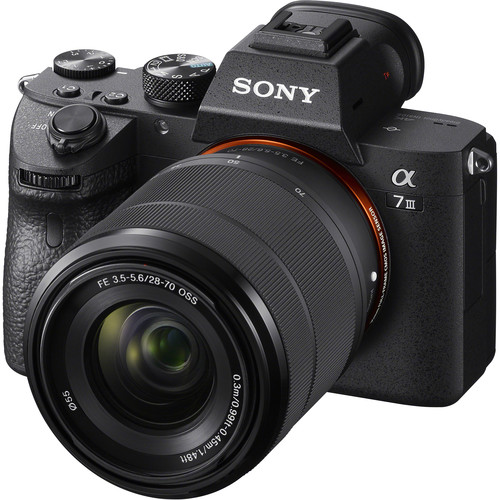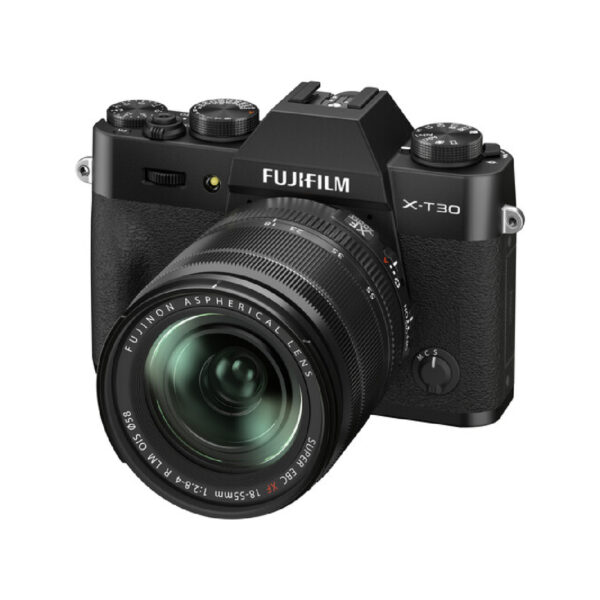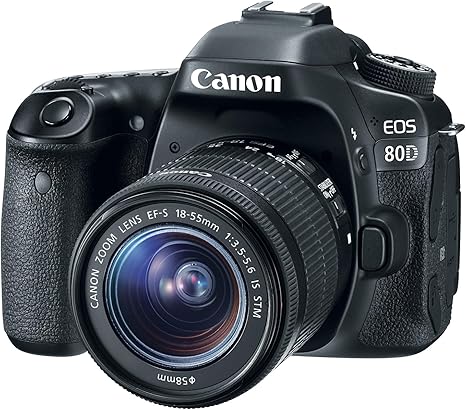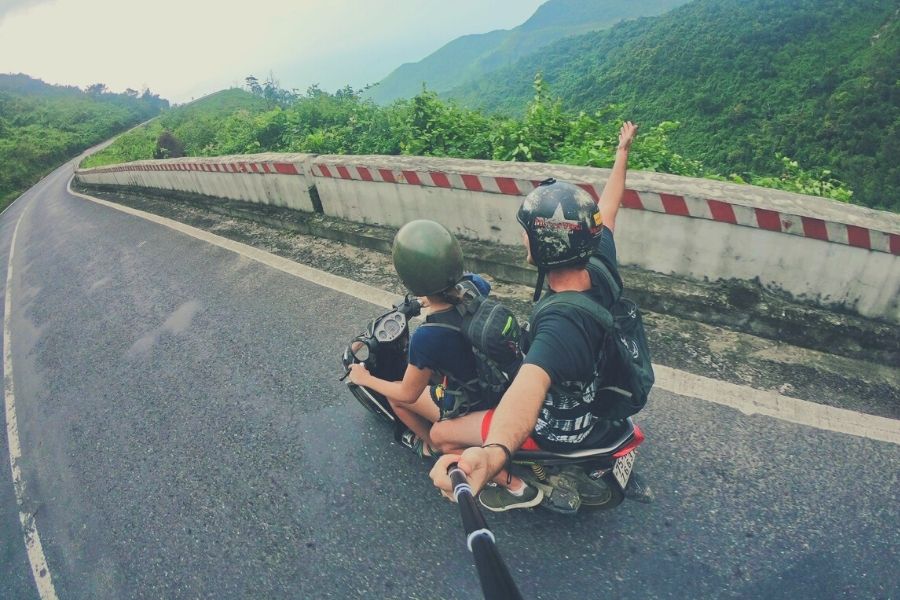Mirrorless cameras are a great choice for photographers and videographers.
Boasting incredible technology and performance, they are fast becoming some of the best cameras on the market.
They’re smaller and lighter making them a great alternative to a traditional DSLR.
Plus, they come with super fast autofocus and quick continuous shooting.
Mirrorless cameras are also typically more user-friendly than DSLRs making them a great choice for beginners as well as professionals.
These cameras are highly versatile and able to take on a wide variety of photography and videography projects.
I personally love a mirrorless camera and much prefer them to DSLRs.
Aside from dipping my toe back into the pond of DSLRs for the odd dabble, I have pretty much exclusively used mirrorless cameras for the last five years.
I have tried many different models over the last few years and know well what makes a mirrorless camera great.
So here we have five of the best mirrorless cameras under $1000 currently on the market.
These cameras tick all my boxes and perform sensationally to produce exquisite still images and beautiful videos.
Best Mirrorless Camera Under $1000 – Reviews
I was blown away by these five impressive mirrorless cameras.
Each camera has something unique to offer whilst performing up to the standards I expect from a mirrorless camera.
Whilst there is one that stands out to me above the rest, a camera is not one size fits all.
Therefore, whilst it is the best mirrorless camera under $1000 for me, it may not be the perfect fit for you.
However, there are five incredible cameras and I can guarantee that one will meet your needs.
Panasonic Lumix LX100 II – Best Mirrorless Camera Under $1000 Overall

The Panasonic Lumix LX100 II is a powerhouse compact camera with impressive features for both photography and video enthusiasts.
With a 17 megapixel sensor, it delivers beautiful high resolution images with exquisite detail.
It also supports 4K video recording and captures stunning videos.
One standout feature of the LX100 II is its advanced autofocus system.
It combines Depth From Defocus (DFD) technology and contrast-detection autofocus to achieve one of the fastest and more accurate focusing I have ever seen.
This is especially beneficial when shooting fast-moving subjects and action packed scenes such as motorcycle videos.
The LX100 II is also equipped with outstanding image stabilization.
The 5-axis optical image stabilization compensates for any camera shake and achieves super smooth results.
The camera also offers a versatile lens system featuring a fixed 24-75mm zoom lens.
This provides a wide-angle to short-telephoto range making it suitable for a variety of shoots.
I attended a wedding with this camera and loved that I could capture beautiful group photos and intimate close ups without switching lenses like I would with an alternative.
Whilst I could have had enhanced shooting options with an interchangeable lens system, I didn’t feel restricted by the fixed lens at all.
Ultimately, I felt that this camera is a compact powerhouse that excels in capturing both stills and videos.
Camera Resolution
This camera has a 17 megapixel sensor which is great for a compact camera
Video Resolution
Shoots in stunning 4K resolution for high quality video.
Auto Focus
Features award-winning autofocus technology that deserves every accolade it has received. I was super impressed by the performance, it is the fastest and most accurate autofocus I have ever used.
Image Stabilization
Outstanding 5-axis optical image stabilization that creates smooth and fluid video that is simply unrivaled.
Low Light Performance
With the camera’s incredible autofocus and image stabilization plus a high-performing ISO range, the LUMIX LX100 II has magnificent low light performance. Images are crisp, clear and detailed even in the dimmest and most difficult lighting conditions.
Lens Options
Features a fixed lens which limits options, however, the zoom lens does have a decent range of 24-75mm. This makes it a great entry-level camera without any additional investment for lenses.
“The Panasonic LUMIX LX100 II won my top spot for the best mirrorless camera under $1000. This camera gets the shot every time with exceptional autofocus and image stabilization.”
Sony A7 III – Best Mirrorless Camera Under $1000 for Professional Results

If you’re looking for a mirrorless camera under $100o that can take your photography to the next level, the Sony a7 III is a top contender.
This compact camera offers impressive features that make it an excellent choice for capturing stunning images in various scenarios.
Equipped with a full frame sensor, it delivers exceptional image quality, ensuring vibrant colors and sharp details that will elevate your photography.
Its full frame sensor also makes it a great option for professionals who work with print production.
With its fast and accurate autofocus system, you can easily capture sharp shots even in challenging lighting conditions.
Another great feature is the tilting LCD screen which adds versatility to your shooting experience with the capability to shoot from different angles.
A downside of the Sony a7 III is the expense of its lenses.
Due to the higher price tag of the lenses, this camera should be considered as a longer term investment.
But the potential for exceptional results from this camera are worth the cost.
Camera Resolution
This camera has a 24.2 megapixel full frame sensor that can take your photography to the next level.
Video Resolution
The a7 III can capture stunning 4K up to 30fps and super slow motion at 1080p up to 60fps.
Auto Focus
Outstanding autofocus technology locks onto the subject and tracks for superb image quality.
Image Stabilization
Features Sony’s renowned SteadyShot in-body image stabilization. This image stabilization performs remarkably and achieves impressive results. It works extremely well and as it is in-body, it remains consistent regardless of which lens you use.
Low Light Performance
mpressive low light performance that continues to perform extremely well even at high ISO.
Lens Options
Compatible with Sony’s impressive range of lenses. The most popular choice for this camera is the Sony 16-35mm that boasts a versatile focal range.
“I love the Sony A7 III for achieving professional-quality results. Whilst it does have a premium price tag when lenses are factored in, I definitely consider this camera to be a great long-term investment.”
Nikon D3400 – Best Mirrorless Camera Under $1000 for Affordability

The Nikon D3400 is a standout camera in all situations but particularly for nighttime photography and videography.
Its low light performance sets it apart from the competition.
The D3400’s native ISO range of 100-25,600 helps to deliver impressive results in challenging lighting conditions.
This camera is a delight for photographers who want to capture the magic of the night.
Its extraordinary performance, combined with its optimal ISO range and incredible resolution, make it the ideal camera for capturing the captivating beauty of nighttime scenes.
Autofocus helps to make this happen and performs well when shooting stills.
However, it struggles to perform when capturing video and is a major downfall of this camera.
Regardless of the autofocus issues with video, this camera has excellent videography capabilities and the best 4K video camera for its price tag.
Plus, its portability and durability make it easy to carry around and perfect for shooting on the go.
Camera Resolution
24 megapixels capture breathtaking still images that are extremely high quality.
Video Resolution
Shoots incredible 4K and is one of the best 4K cameras for its price tag.
Auto Focus
Impressive autofocus technology that works extremely well when shooting stills. The autofocus is fast and accurate so that even fleeting moments are captured in crisp detail. However, where this camera falls short is that the autofocus struggles more with video. Whilst it does work to some extent, it fails to track and stay focused.
Image Stabilization
The D3400 does not feature in-body image stabilization. However, it is compatible with a range of lenses that do feature image stabilization and compensates for this.
Low Light Performance
Boasts a native ISO of 100-25,600 that continues to perform extremely well with minimal image noise even at high ISOs. This is supported by great autofocus when shooting still.
Lens Options
Not only is this camera compatible with Nikon’s excellent lens selection, it also works with a number of third party lenses. This enhances the affordability of this camera.
“The Nikon D3400 is one of the best-performing yet affordable mirrorless cameras available. I think this is an excellent choice for anyone looking for a mirrorless camera on a budget.”
Fujifilm X-T30 – Best Mirrorless Camera Under $1000 for Low Light Performance

This remarkable camera boasts beautiful resolution with its 24.1 megapixel sensor.
It is a top choice of mirrorless camera amongst professionals.
This is because it can capture extremely high quality and therefore highly marketable shots with incredible detail.
The autofocus on the X-T30 is simply incredible, offering reliable Tracking and quick capture.
When it comes to video, this camera excels with its ability to shoot in 4K at 30 fps whilst slow motion can be also achieved in 1080p at 120 fps.
Meanwhile, its sturdy build ensures durability in any condition.
However, the highlight is its low light performance.
It simply blows every other camera out of the water.
But a downside is the lack of in-body image stabilization.
This however can be compensated with stabilization in the lens.
Overall, the X-T30 truly stands out as one of the best mirrorless cameras under $1000 delivering professional quality and versatility.
Camera Resolution
Shoots immaculate stills with its 26 megapixel sensor.
Video Resolution
Captures video beautifully in 4K at 30fps or 1080p up to 120fps.
Auto Focus
Seriously outstanding autofocus technology with face detection and tracking. This makes it perfect for shooting portraits and capturing videos of motion.
Image Stabilization
No image stabilization in-body. However, you can get compatible lenses with image stabilization.
Low Light Performance
Sensational low light performance. Great ISO range that continues to work well at high ISO. Even print images look breathtaking at up to ISO 200. The magnificent autofocus helps to enhance the performance in difficult light.
Lens Options
Compatible with Fujifilm’s extensive range of incredible lenses plus their third-party alternatives. Many Nikon and Canon lenses also work with this camera providing endless shooting options. A lens adapter may be required for certain lenses.
“I found the low light performance of the Fujifilm X-T30 to be out of this world.”
Canon EOS 80D – Best Mirrorless Camera Under $1000 for Beginners

With its 24.2 megapixel sensor, this camera excels in capturing superb still images with sharpness and clarity.
The impeccable 45-point autofocus system focuses lightning fast.
This helps to achieve crisp and detailed photos that are professional-level.
It is complemented by a superior tracking system capturing movement seamlessly.
However, whilst it shines with still images, video is a bit of a disappointment.
It does shoot video in Full HD which is great but all of its market competition has 4K capabilities.
Its compact and lightweight design perfectly suits an adventurous lifestyle and is perfect for shooting on the go.
In addition to its high versatility, it also has a user-friendly design that makes it a top choice for photographers of all levels.
Camera Resolution
Incredible 24.2 megapixel sensor.
Video Resolution
Disappointingly a maximum of 1080p video resolution.
Auto Focus
Autofocus is extremely high performing with an advanced tracking system. It works exceptionally when shooting moving subjects.
Image Stabilization
Does not have in-body image stabilization but is compatible with lenses that feature image stabilization.
Low Light Performance
This camera features a crop sensor that has some of the best low light performance on the market. It performs exceptionally well in dimly lit conditions.
Lens Options
Great choice of lens options from the Canon range. However, it is the Sigma 18-35mm that has the most popularity with this camera. It is an incredibly high performance zoom lens that has one of the fastest zooms on the market.
“My top choice for beginners, the Canon EOS 80D is incredibly beginner-friendly without compromising on advanced features or image quality.”
How to Buy the Best Mirrorless Camera Under $1000
If you’re still unsure what you’re looking for, the following factors are exceptionally important to consider.
Camera Resolution
When considering camera resolution in a mirrorless camera, it’s important to understand the impact it has on image quality.
Higher resolution cameras capture more detail and allow for larger prints or cropping without significant loss of quality.
When looking for a mirrorless camera, I would advise considering a resolution of at least 20 megapixels for most photography needs.
Cameras with at least 20 megapixels are easy to find and can be secured at an affordable price tag.
Therefore, there is no need to compromise on image quality.
However, if size and weight is a key factor for you, then you can afford to compromise on camera resolution.
A camera like the Panasonic LUMIX LX100 II is a great example.
Also keep in mind that higher resolution cameras require more storage space and may have larger file sizes.
Ultimately, finding the right balance between resolution and your specific photography requirements is key.
Video Resolution
When considering video resolution, most cameras these days typically have great capabilities of at least 1080p or 4K.
Higher resolution videos offer sharper and more lifelike visuals.
When looking for a camera with good video capabilities, it’s recommended to opt for at least 1080p (Full HD) resolution or higher for professional quality results.
4K resolution is also extremely affordable these days so there is no need to compromise.
However, keep in mind that higher resolutions may require more storage space and demand more processing power.
Auto Focus
Mirrorless cameras utilize advanced autofocus systems that rely on phase-detection, contrast-detection technology or a combination of both.
These systems use focus points across the image sensor to track and lock onto the subject.
I’ve found that mirrorless cameras offer extremely advanced autofocus technology when compared to traditional DSLR cameras.
One advantage of autofocus in mirrorless cameras is their ability to offer real-time autofocus tracking.
Additionally, mirrorless cameras often provide eye detection autofocus which automatically focuses on the subject’s eyes.
This ensures portraits are sharp and enhances overall image quality.
When considering a mirrorless camera, it’s essential to evaluate the autofocus capabilities.
Look at the number of focus points, speed, accuracy and tracking performance.
Predominantly, look for cameras with a high number of focus points distributed across a wide area for improved subject coverage.
Additionally, features such as advanced subject tracking algorithms and customizable settings can enhance the autofocus experience.
Overall, autofocus in mirrorless cameras plays a crucial role in achieving precise and reliable focus.
Image Stabilization
Image stabilization is a valuable feature in mirrorless cameras that helps reduce the effects of camera shake.

This results in sharper images and smoother video.
Mirrorless cameras employ various types of image stabilization, primarily optical image stabilization.
Optical image stabilization counteracts camera movement and vibrations.
This feature is especially beneficial in low light situations or when using longer focal lengths where even slight movements can cause noticeable blurring.
When choosing a mirrorless camera, it’s essential to consider the type and effectiveness of its image stabilization system.
Look for cameras with advanced stabilization technologies that provide multiple axes of stabilization and offer a high level of compensation for camera shake.
However, if a camera does not have in-body image stabilization, you do not necessarily need to rule it out.
Often, interchangeable lenses have image stabilization and can therefore compensate for the lack of this in the camera body.
Low Light Performance
Low light performance is a crucial factor to consider when selecting a mirrorless camera.
Mirrorless cameras are known for their ability to handle low light situations exceptionally well.
Therefore, selecting one that does not have exceptional low light performance is honestly a waste of money.
With larger sensors and advanced noise reduction technology, they can capture clean and detailed images even in challenging lighting conditions.
The ability to shoot at higher ISO settings without significant loss of image quality is a key advantage of mirrorless cameras.
This enables photographers to capture sharp, detailed photos with minimal noise.
Mirrorless cameras also have exceptional autofocus capabilities which helps to enhance the low light performance.
Mirrorless cameras tend to be ideal for nighttime photography, indoor shooting and other low light scenarios.
When choosing a mirrorless camera for low light performance, look for models with larger sensor sizes, good high ISO capabilities and advanced noise reduction.
Lens Options
One of the great advantages of mirrorless cameras is the wide range of lens options available.
Mirrorless cameras tend to have interchangeable lenses but there are also some fixed lens models too.
Whilst fixed lenses have more limits, they still offer excellent image quality.
Plus, these cameras are typically smaller and lighter, making them convenient for travel.
On the other hand, interchangeable lenses allow you to adapt to different shooting scenarios by selecting the appropriate focal length.
With any interchangeable lens system, you will have a variety of lens options from the camera manufacturer.
They offer a wide range of focal lengths and specialties.
Additionally, third-party lens manufacturers also produce lenses compatible with various mirrorless camera systems.
This provides even more choices and they can often be found at a more affordable price.
This extensive selection of lenses ensures that mirrorless camera users have the flexibility to capture diverse subjects and achieve their desired creative vision.
Best Mirrorless Camera Under $1000 – My Verdict
The Panasonic LUMIX LX100 II is my ultimate favorite mirrorless camera under $1000.
This camera boasts outstanding autofocus and incredible image stabilization which enhances both photo and video results.
However, I loved all five cameras reviewed and enjoyed using every single one.
For a budget-friendly alternative, the Nikon D3400 is an outstanding choice.
And for those who need enhanced low light performance, the Fujifilm X-T30 is simply remarkable.
Whichever camera you choose, you are guaranteed to have one of the best mirrorless cameras under $1000.
Best Mirrorless Camera Under $1000 FAQ
Is a mirrorless camera better than a DSLR?
A DSLR is a popular option for professionals. This is because they typically offer a wider range of interchangeable lenses and better low light performance.
However, mirrorless cameras are smaller and more lightweight. This makes mirrorless cameras a popular choice for those who shoot on the go and need a portable alternative.
Neither camera is arguably better, it all depends on your own preferences.
What is a mirrorless camera?
Mirrorless cameras, as the name may suggest, captures images without the use of a mirror in the camera body. This typically makes them smaller and lighter as they do not feature a bulky mirror.
Whilst there are many types of mirrorless camera, such as smartphones, the term ‘mirrorless camera’ most often refers to one that uses an interchangeable lens system.
What are the advantages of a mirrorless camera?
The main advantage of a mirrorless camera is that they are smaller and more lightweight.
Mirrorless cameras also feature an electronic viewfinder which makes the shooting experience a lot smoother. They also typically have better performing autofocus and image stabilization than DSLRs.

